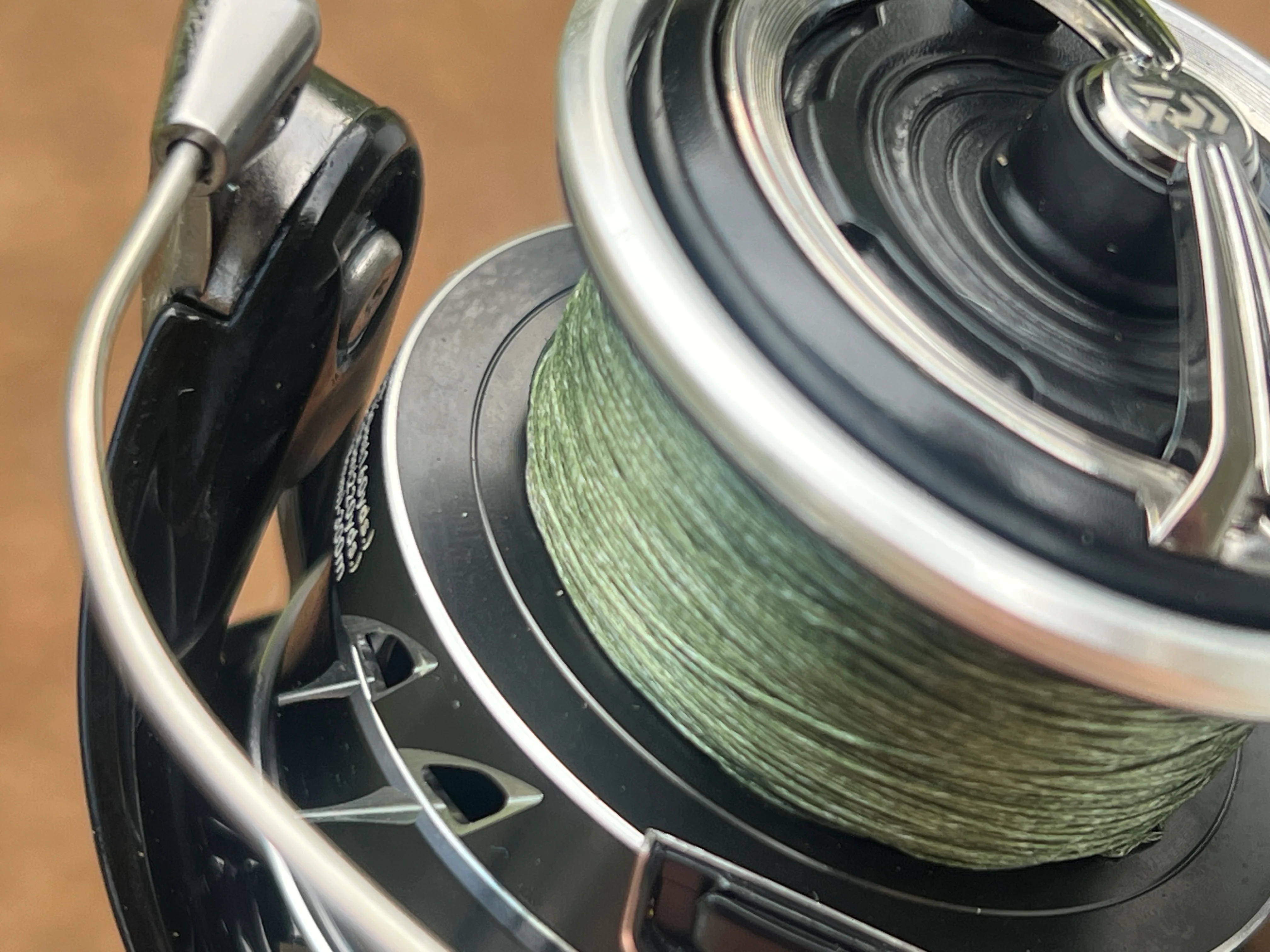The Daiwa Tatula MQ LT is the most affordable offering in the iconic Tatula lineup of spinning reels. The California-based Japanese manufacturer builds some of the best products available in bass fishing. And the price usually reflects it. Some of Daiwa’s rods and reels are priced between $700 and $1,300. What I love about the Tatula MQ LT is that you get the benefits of Daiwa's industry-leading technologies without the high-end price tag.
At $200, the Tatula MQ LT recently took home the Best Value award in our spinning reels test. Standing out among 21 other reels (varying in price from $45 to $470), the MQ LT proved to be the best bang for the buck when taking into consideration the quality, performance, and price. Here’s what I like about it.
Daiwa Tatula MQ LT Overview
Specs
Size tested: 3000
Gear ratio: 6.2:1
Weight: 7.1 ounces
Ball Bearings: 8+1
All sizes: 1000, 2000, 2500, 3000, 4000
Pros
Dual fill lines on the spool
Sensitive bail operation
Great drag
Cons
Some anglers may not like the handle design
I was immediately impressed with the feel of the Tatula MQ LT in my hand. At 7.1 ounces, the 3000 size reel that I tested wasn’t as light as some of the premium reels, but still lighter than many of the other models, like the Lew’s Custom Spinning Reel (8.7oz) and the Abu Garcia Max Elite (7.8oz). In addition to the lightweight design, the T-shaped paddle knob on the handle is immediately noticeable. Some anglers may prefer a more standard-shaped knob, but this style offers a larger grip surface. Plus, it is very comfortable.
Another subtle feature that I really like is the groove carved into the lower inner surface of the spool that can be used as a fill line. Overfilling spinning reels can lead to poor performance, resulting in various tangles. With the fill line, you know exactly how much to spool up. Even cooler, there’s also a groove further in that indicates you’re running low on line and need to re-spool. After spooling up my line until it landed between the two grooves, I set out for the lake.

On the Water Performance
While the MQ LT performed as I thought it would on the water—casting smoothly, adjusting effortlessly, and hauling back to the boat—the ease with which the bail opens and closes is what sets it apart from other reels. Now, I know turning the handle on a spinning reel and not manually flipping the bail down is frowned upon because it risks damaging the reel. Still, out of habit, I do it. On some reels, the bail falls pretty easily; others take a more forceful turn of the handle to get them down. The MQ LT bail slips down almost instantaneously with little resistance. It is the smoothest spinning reel I’ve ever fished with in that regard.
In addition, the performance of the Tatula MQ LT raises the question: Why would I ever spend more than $200 on a spinning reel? While some of the reels I tested were a touch better, they were also significantly more expensive. I’d say the MQ LT is right there with the other premium reels—some of which are double the price—I've fished with. The mechanisms are crisp, the body is light but rigid, the drag is sensitive with plenty of adjustments, and it’s smoother to reel than the vast majority of other models.
I was really impressed by the drag. Daiwa uses a system they call ATD (Automatic Tournament Drag). The ATD system “uses an improved drag grease that exhibits a low viscosity at rest, yet becomes more viscous immediately after drag start up.” In layman's terms, that translates to the drag starting smoothly as soon as you set the hook, instead of it jerking more abruptly at the start. If you’ve ever used a trolling motor that goes from zero to 100 instantly as opposed to one of the newer models that fades in until it’s up to top speed, it’s kind of like that, just on a much smaller scale.
For $200, everyone who buys this reel will be pleased with it. I appreciate the high-end feel, and I love that I can buy two or three of them for the price of one premium reel. The Tatula MQ LT can do anything you need a bass spinning reel to do, while costing almost half of some other top performers.



